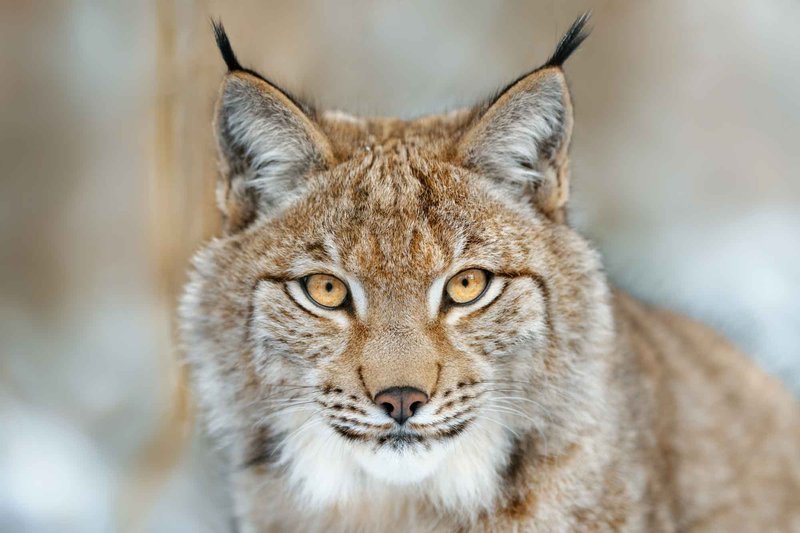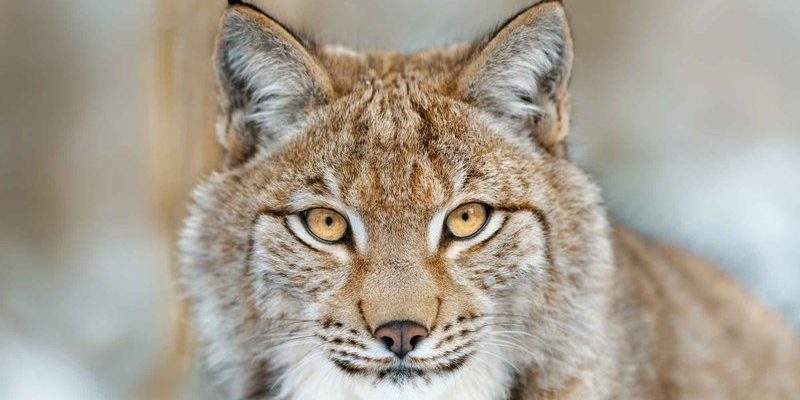
When we talk about the Eurasian lynx, we’re not just chatting about a single animal; we’re looking at a whole species that plays a crucial role in maintaining the balance of its ecosystem. Think of it as a compass in a forest—when it thrives, everything around it often thrives too. But like many species, it’s been affected by various challenges, and understanding its plight is essential for safeguarding its future.
Understanding the Eurasian Lynx
The Eurasian lynx is the largest of the lynx species, standing at about 2 to 4 feet long, with a similar height at the shoulder. These cats are agile hunters, primarily preying on animals like roe deer, rabbits, and birds. Their sharp eyesight and keen hearing make them excellent stalkers.
Here’s the thing: the lynx is also known for its elusive nature. Unlike other big cats, it tends to avoid humans and prefers dense forests. The lynx is a master of camouflage, blending seamlessly into its forest surroundings, which makes spotting one in the wild a thrilling challenge for wildlife enthusiasts.
This cat isn’t just a beautiful part of the ecosystem; it helps control prey populations. When the lynx is present, it keeps herbivore numbers in check, allowing vegetation to flourish, which in turn supports other wildlife. So, protecting the Eurasian lynx is not just about saving a single species; it’s about preserving a whole web of life.
Current Conservation Status
You might be wondering where the Eurasian lynx stands on the conservation scale. According to the International Union for Conservation of Nature (IUCN), the Eurasian lynx is classified as “Least Concern.” However, this status can be a bit misleading. While the overall population may not be critically low, certain regions are experiencing significant declines.
Many European countries have seen the lynx populations rebound thanks to conservation efforts. Yet, in other areas, habitat loss, poaching, and fragmentation threaten their existence. The Eurasian lynx’s adaptability is a double-edged sword; while it’s capable of surviving in various habitats, it still requires sufficient territory and prey.
The key takeaway here is that although the species is not endangered, local populations can be vulnerable. Conservationists are working hard in various regions to monitor and protect lynx habitats, ensuring they continue to thrive.
Threats to the Eurasian Lynx
Understanding the threats facing the Eurasian lynx is crucial for developing effective conservation strategies.
1. Habitat Loss: As forests are cleared for agriculture, urban development, and logging, the lynx loses its home. Without adequate cover, they struggle to find prey and are more exposed to human activities.
2. Poaching: While hunting regulations exist, illegal poaching still poses a significant threat. The beauty of the lynx has, unfortunately, made it a target for trophy hunters and illegal wildlife trade.
3. Road Mortality: As roads and highways expand, lynx often find themselves in peril. Collisions with vehicles can lead to injuries or death, particularly since young lynx are less experienced at navigating these dangers.
4. Prey Availability: Changes in prey populations due to overhunting or disease can force lynx to adapt quickly. If their primary food sources decline, they may struggle to survive.
Each of these threats can impact local lynx populations, leading to increased vulnerability in certain areas. Addressing these issues is essential for the long-term survival of this remarkable cat.
Conservation Efforts in Action
Conservationists around the world are stepping up to tackle the challenges faced by the Eurasian lynx. Here’s how they’re making a difference:
1. Protected Areas: Establishing national parks and reserves helps safeguard lynx habitats. These protected spaces keep both the lynx and their prey safe from human encroachment.
2. Monitoring Programs: Tracking lynx populations through GPS collars and camera traps allows researchers to gather important data on their movements, health, and behavior. This information is vital for understanding their needs and threats.
3. Public Awareness: Educating local communities about the lynx’s role in the ecosystem helps reduce fear and misconceptions. Positive community engagement can lead to more supportive attitudes towards conservation efforts.
4. Legal Protections: Many countries have implemented strict laws against poaching and habitat destruction. While enforcement can be challenging, these regulations are crucial for protecting the lynx.
Through collaboration between governments, NGOs, and local communities, these efforts are gradually improving the prospects for the Eurasian lynx.
The Role of Communities in Conservation
You might not expect it, but local communities play a vital role in the survival of the Eurasian lynx. Their involvement can make a world of difference:
1. Sustainable Practices: Communities practicing sustainable farming and forestry help maintain the lynx’s habitat. By managing land responsibly, they reduce the pressure on the lynx and its prey.
2. Wildlife Tourism: Eco-tourism can provide economic incentives for locals to protect lynx habitats. When people see the value in having lynx around—whether through wildlife watching or photography—it encourages conservation efforts.
3. Conflict Mitigation: When lynx prey on livestock, it can lead to frustration and conflict between farmers and the lynx. Education and support systems can help mitigate these conflicts, ensuring both people and lynx can coexist.
When communities take an active role in conservation, the results speak for themselves. Their efforts contribute to safeguarding the lynx and fostering a more harmonious relationship between humans and nature.
The Future of the Eurasian Lynx
So, what does the future hold for the Eurasian lynx? Well, it’s a mixed bag. On the one hand, dedicated conservation efforts are making strides in some areas. On the other hand, the ongoing threats mean there’s still work to be done.
The good news is that awareness is growing. More and more people are recognizing the importance of protecting not just the lynx, but entire ecosystems. As conservation strategies evolve, there’s hope that we can create a sustainable future for the lynx.
Innovative approaches like genetic research and habitat restoration are being explored to enhance the resilience of lynx populations. As more data is collected and shared, the picture of how best to support these cats will become clearer.
Every little bit helps. Whether it’s supporting a local wildlife charity, spreading awareness about the lynx, or simply enjoying the natural world, we can all play a part in ensuring that these beautiful creatures continue to roam our forests for generations to come.
In conclusion, while the Eurasian lynx may not be classified as endangered, its ongoing survival depends on our collective efforts to protect its habitat and mitigate threats. By understanding and embracing our role in conservation, we can help ensure a bright future for the Eurasian lynx—a true emblem of nature’s beauty and strength.

